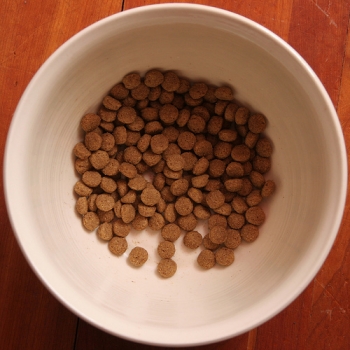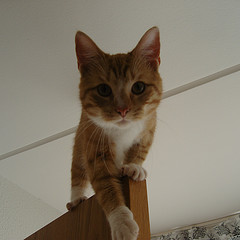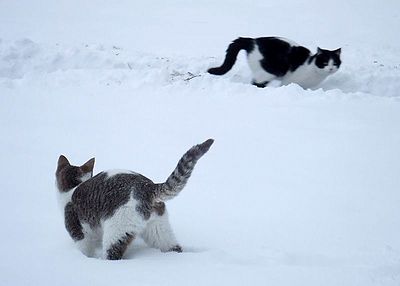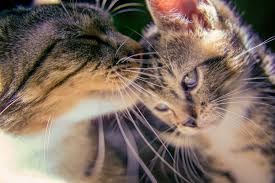
Feeding schedules for pets depends on their age. Cats and dogs at 2-3 months should be fed 4 times a day; 3-6 months, 3 times a day; 6-12 months, twice a day. Adult dogs and cats do best with twice daily feedings.
Leave the food bowl down no more than 30 minutes. Your pet should consume it’s food in that time period.
Before domestication pets didn’t always find food available daily. So if your pet skips a meal or two, don’t worry. If it continues for more than 2 days, it is time for a veterinary visit to check your pet’s health.
Amounts of food vary with the size, age and activity of your pet. If you feed your pet commercial food, the guidelines they offer are sometimes more than necessary to maintain a healthy weight. You’ll have to test and judge.
You should be able to feel your dog’s ribs when running your hands along his sides. Puppies and working dogs need more protein and fat for energy than couch potatoes and seniors. If you find that your dog is gaining weight, cut food by 10% until you find the correct amount.
Adult cats consume about 200-300 calories per day. Kittens need at least twice that amount. Adolescents, 6-12 months old, need extra calories as they are still growing. If you feed commercial food, offer the recommended amount and adjust portions as necessary.
Dogs will eat as much as they are given, while cats eat only until they are full.
You can set up a feeding schedule to meet times that will be convenient for you. Just keep in mind pets do better with a regular routine. Don’t exercise your dog after eating to avoid stomach torsion.
Dogs and cats who are being fed table scraps in addition to commercial foods will sometimes turn up their noses at the pet food you try to feed them. Try mixing human food with pet food, gradually decreasing the human food until he is eating only pet food. Or go “cold turkey.” Eventually, your pet will get hungry and eat what is in his bowl. Changing the brand of pet food may also help.
Related Articles



